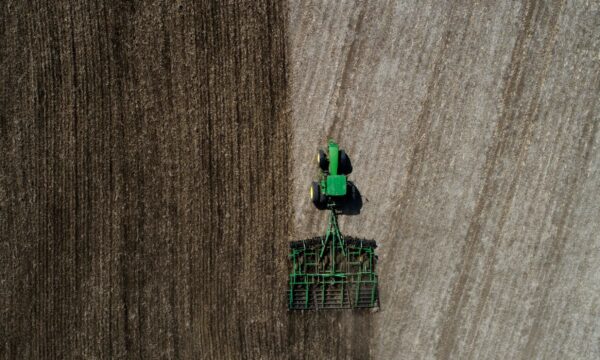
Kheyti is promoting the use of greenhouses as an alternative to traditional open-field agricultural practices, with the benefits including protection from changing weather conditions and crop pest and diseases (© Pexels)
In the south Indian region of Hyderabad, a non-profit called Kheyti has developed an affordable solution to income stability and climate-resilient crop production for smallholder farmers and SMEs (small and medium enterprises) – greenhouses.
The organisation founders spent countless hours meeting with Indian farmers to understand the range of issues threatening farming communities. “When we bucket the problems, there are two broad challenges: climate-based risks like heat, rain and pests – and distribution-based risks like poor linkages to inputs, finance, knowledge and markets,” said Sathya Raghu Mokkapati, one of Keyti’s co-founders.
Kheyti initially aimed to target both issues, but after a series of initial failures at promoting stable yields and incomes via open-field farming, the organisation focused on promoting the use of greenhouse agriculture and making it more accessible to smallholder farmers.
The greenhouse program is still in the process of being tested, with pilot groups across India showing promising results. Through preliminary studies of the pilot, farmers have been shown to grow seven times more food using 90% less water when using greenhouses compared to traditional open field practices. The use of greenhouses also protects crops from environmental factors, such as pests, resulting in the reduced need for inputs such as pesticides and fertilizer. This in turn, benefits the farmers with reduced agricultural input costs, promoting financial stability and resilience at the same time as increasing their crop yields.

Kheyti are targeting numerous points of agriculture value chains across India to ensure that smallholder farmers are equipped to tackle the growing threats to food security (© Pexels)
As well as promoting access to greenhouses, Kheyti also supports numerous points in agriculture value chains. Including accessibility of seeds, education and provides mobile phones to farmers to use as a direct link to Kheyti. In terms of market access, the organisation partners with market retailers to sell produce directly from farmers to retailers.
In India, around 82% of farmers are smallholders, meaning they own less than 5 acres of land. The issue of land size was heavily considered in Kheyti’s greenhouse system, resulting in the design of greenhouses which use just 2% of the average farmer’s land but can be expanded if wanted. This allows farmers to use the majority of their land for other crop practices and to diversify away from producing one type of crop.
A conventional greenhouse in India can cost up to $30 000, which is often too expensive for the average farmer. Kheyti’s greenhouses cost a fraction of this at $2,500 which can be financed via Kheyti’s partnerships with local banks. This financial model is designed to promote access to farming tools which would normally be out of reach of smallholder farmers. Public sector banks in India often refuse loans to smallholder farmers, forcing them to seek funds from private lenders, commonly charging excessive interest rates of more than 60%.
“The largest challenge for me is that the farmers are not getting the loans on time. Today on average, farmers will have to wait a month to get a loan. We want to make this process simpler and faster,” says co-founder Sathya Raghu Mokkapati.
The greenhouse finance model was successfully undertaken within a pilot group, notably without government subsidies. The hopes are for the greenhouse financing to be implemented by farmer-owned collectives and businesses in future to promote both the sustainability of the system and transparency throughout the farming community.
“Replication and scale are the next steps ahead of us. We want to reach a million farmers in the next decade, including global expansions to countries in South Asia and Africa.”
If you would like to read more of this subject, please see the links below:
1 Comment
Leave a Reply
Related News & Blogs
Horizon scanning for climate-driven pest threats can prevent biodiversity loss
On International Day for Biological Diversity, CABI’s Dr MaryLucy Oronje looks at horizon scanning and pest preparedness – approaches that help prevent the spread of invasive species, a major threat to biodiversity. Horizon scanning for invasive pests…
22 May 2025





NGOs are really doing well in the agriculture sectors for farmers I really apericated it.